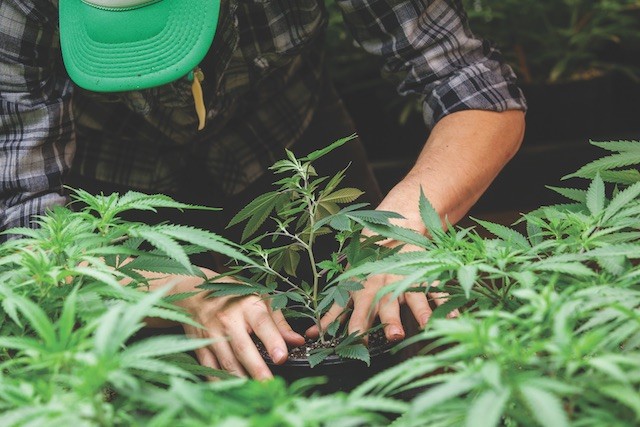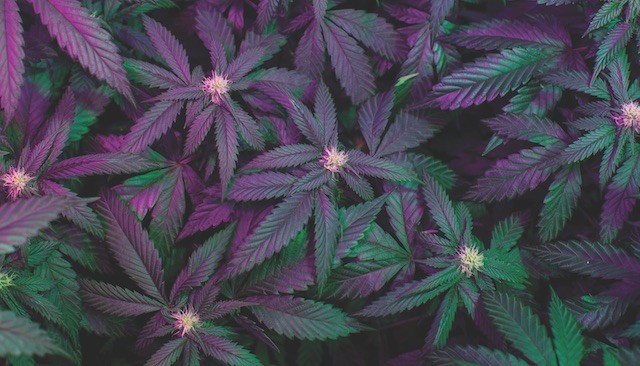The cannabis industry is built entirely on the branches of a plant. Can the industry be a custodian for the planet? Advocates and environmentalists tell us what that may look like.
The Cannabis Conservancy is trying to keep up with a whirlwind of regulatory projects on the local and state levels, and even internationally. At the same time, they’re working to make certification easier for farmers, who are busy trying to keep up with new regulations as markets expand in legal states, among other things.
CANNABIS CONSERVANCY co-founder Jonathan Valdman is very aware of which projects are top priorities right now. He said among regulatory and environmental concerns, the number one problem is pesticides.
MG: WHAT ARE SOME PROJECTS THE CONSERVANCY IS WORKING ON RIGHT NOW?
What we’re seeing in California right now, with the constant changing of local ordinances, state regulations, and even the new trailer bill the governor signed, is most farmers are focused on coming into compliance with local permits and licensor regulations or necessities, and also just trying to stay alive in this game as it’s growing and transforming so rapidly.
One of the main founding principles of the conservancy is meeting the client where they are, bringing them into the conservancy, seeing where they are, and then figuring out an action plan for how they can constantly improve their abilities, their protocols, and follow through with the values of their company. [We don’t want to] put an extra burden on them, but instead look at what is the most major issue facing the industry right now—and that’s pesticides.
I was at the Chalice Festival in San Bernardino County [in mid-July]. Twenty percent of the entries failed lab tests. So, one of the things we’re working on right now is creating more of an entry level to our certification, which would more focus on being pesticide-free.
My partners also are working on an energy report with the state of Colorado. For just over a year now, [they’ve been] creating a real-time energy usage report for greenhouse, indoor, and eld-grown cannabis so we have some real data and statistics to look at. Once we’re done, the State of Colorado will be using that information for their reports.
Another thing we’re working on right now is some big news: how [international standards organization] ASTM is looking to expand their standards into the cannabis industry. So, we’ve been working hand-in-hand with them in the creation of those standards.

DO YOU THINK INDUSTRY MEMBERS SEE THE IMPORTANCE OF CERTIFICATION?
I think people often times see the value, but it’s a little ahead of the game right now. Like I was saying, a lot of people are really focused on coming into compliance, and even looking forward to when the state is going to require certain compliances to be met. So, we find ourselves in this place of educating.
I think a good way to look at it is looking at people that shop at health food stores and organically and such. A lot of those people have not even started to consider whether or not their cannabis is organic and grown in an organic method. And just to be clear, we cannot use the term “organic” with anything associated with cannabis. The federal government owns the word “organic,” and cannabis is a federally illegal plant, so you’re not allowed to use the term.
We have been working with—and I have met with—members of county boards, as well as state agencies, mostly about education. We haven’t really gotten to the point of sitting down and helping to create any statewide standards yet. We do hope to work with the CDFA (CalCannabis) in order to give some guidance in creating those standards, but it’s not something that’s occurred as of yet.
ANY ISSUES INDUSTRY MEMBERS SHOULD BE AWARE OF COMING DOWN THE ROAD IN CALIFORNIA?
I do know there’s conversation on the table right now and people lobbying to see a carbon-neutral cannabis industry in California by 2026. With that, the Public Utilities Commission is really looking at, right now, how they want to approach this whole industry. If we’re looking to create a carbon-neutral industry, that means the sourcing of our energy has to become so reliant on alternative sources that we have a neutral footprint and/or the slow elimination of high-intensity discharge (HID) lights as a sole source of cultivation. It’s important to add that as the sole source of the lighting, they’re looking at how to mitigate the use of it or put some sort of taxation behind it.
There’s no other plant on the planet that is grown in warehouses under high-intensity lights. If we look back in history as to why that all happened, well, that happened because federal laws and prohibition pushed people indoors and under lights in order to stay out of jail. Indoor cultivation has really filled a gap in time. But now we’re talking about regulations. So, with regulations, we literally have the ability to come out of the closet—or come out of the warehouse, if you will—and use the sun as our main source of cultivation like every other agricultural crop on the planet.

WHAT ARE SOME OF THE ADDITIONAL BENEFITS OF CERTIFICATION, BESIDES BEING AS “GREEN” AS POSSIBLE?
Not only are we geared for certification in America, but we’re aligning ourselves with international-standards associations, so the certification will be accepted on an international level. Other countries including Israel and Uruguay are exporting at this point. So, one day in hopefully the not-too-distant future, we might see America exporting cannabis around the world. Aligning themselves with the Cannabis Conservancy now will put [companies] on an international level of compliance.
Once people sign up they have the support of our team, which can really help to structure their company in a way that creates resilience for them when moving into the regulated market. One of the nice things about our certification is that when you do sign up, we have templates for how to create your own [standard operating pro- cedures] and quality-management systems, as well as how to create your own internal audits of energy and water usage.
So, we have a lot of tools we offer to our clients, to help support them in structuring their company in a manner that will create resilience when operating in the market and also how to structure their company for investors, should they choose to take on investment capital and/or sell their company. If a company is structured in the manner that our protocols require, it’s going to be very attractive to the investor looking to get into the canna market.












